Intel Core i7-7740X Kaby Lake-X Review
Why you can trust Tom's Hardware
Workstation & HPC Performance
Preamble
If you want to know more about our HPC benchmarks, check out the AMD Ryzen 7 1800X CPU Review. We didn't just copy results from that story, though. Rather, after a number of BIOS updates and software configuration changes, we retested everything. This gives us a more up-to-date picture, reflecting improvements of up to 15% that AMD worked hard to enable.
As we dig through these results, remember that semi-professionals almost never overclock their systems. Also, CPUs like Intel’s Core i9-7900X can be hard to keep cool. Consequently, our CPUs are now running at their stock frequencies.
2D Benchmarks: DirectX & GDI/GDI+
Adding Intel’s new CPU to our AutoCAD 2D and GDI/GDI+ graphics benchmarks doesn’t yield any surprises. The newcomer falls into place exactly where you’d expect based on its clock rate.


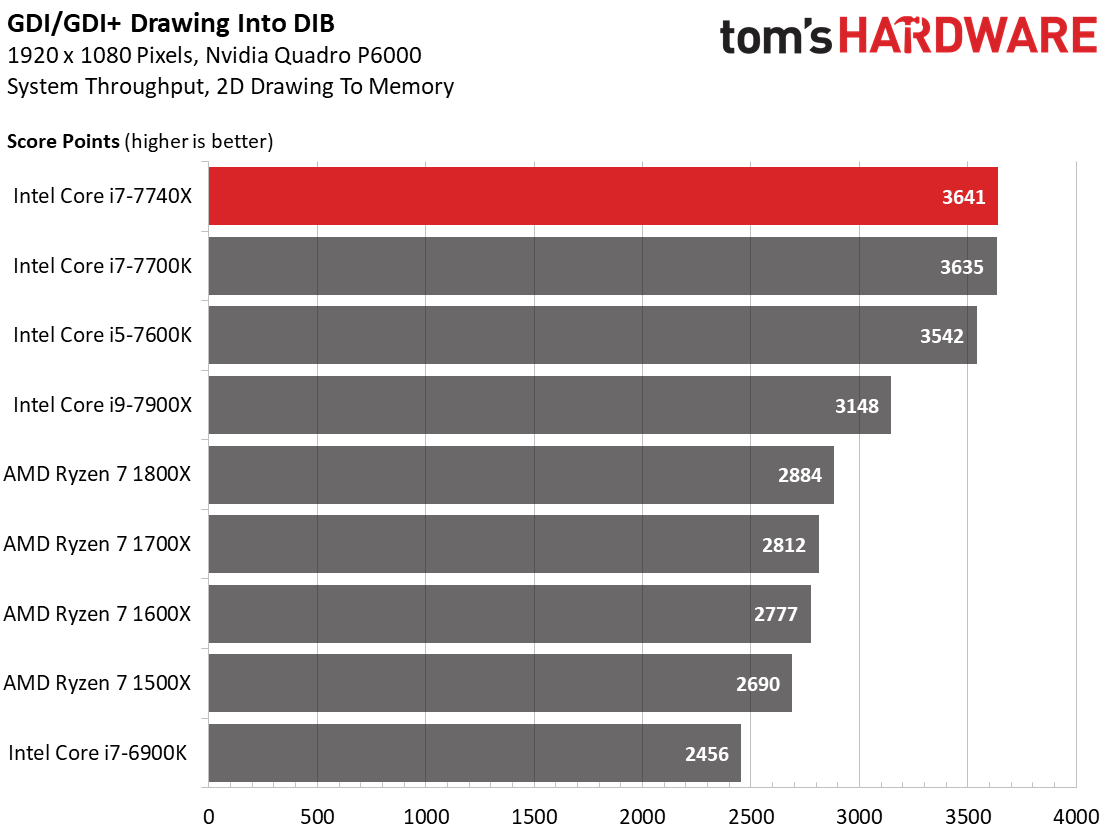
2D Benchmarks: Adobe Creative Cloud
The outcome depends on frequency again in this next round of benchmarks.
Interestingly, the Kaby Lake-X CPU lands right behind Core i7-7700K, if only by a hair. This won’t be the last time we see this inexplicable phenomenon.





3D Benchmarks: DirectX & OpenGL
In some instances, Core i7-7740X pulls ahead of the -7700K. In others, it's beaten slightly. Either way, the performance differences are generally very small and within the measurement error range. The only discernible pattern seems to be that Kaby Lake-X leads when compute tasks run in parallel with graphics output. This means the differences could be platform-oriented.

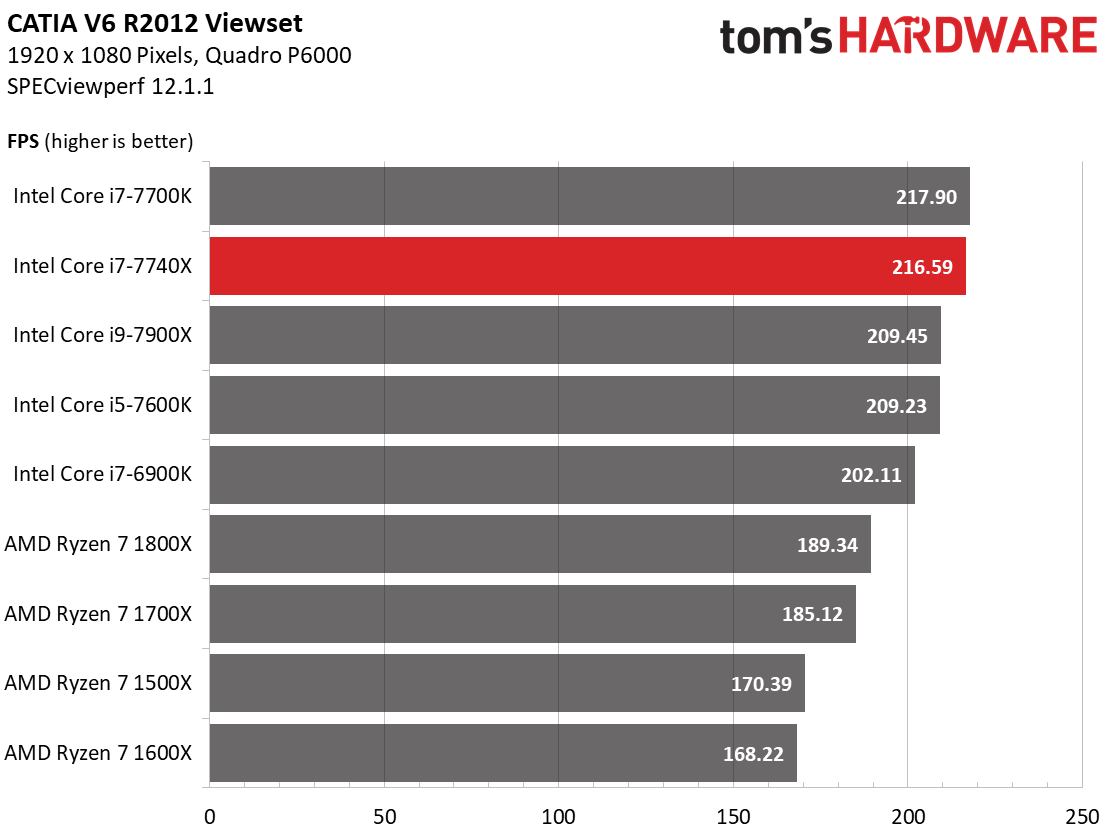






CPU Performance: Workstation
The 3D graphics performance we just measured isn’t all that matters to professional rendering titles. Applications run many other tasks (like simulations, compute jobs, preview rendering) on the CPU simultaneously. The full picture’s only achievable by looking at both of them together.
Get Tom's Hardware's best news and in-depth reviews, straight to your inbox.
Intel's Core i7-7740X does well in workloads that emphasize high clock rates over core count.

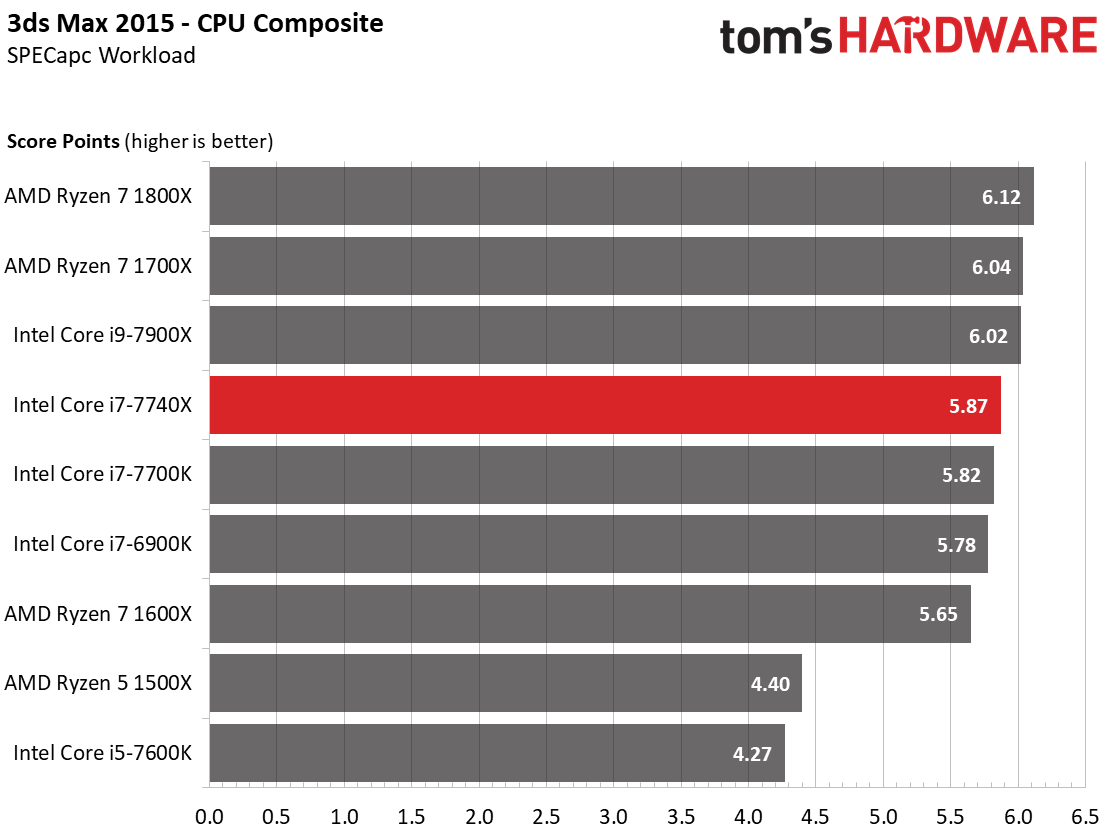


CPU Performance: Photorealistic Rendering
Final rendering doesn’t need a jack of all trades. Instead, efficiency and fast parallel computation are key. This is why photorealistic rendering gets its own test section.
AMD’s Ryzen CPUs do really well, while Kaby Lake-X doesn't. Hyper-Threading keeps Core i7-7740X from losing sight of the field, but we have to wonder whether it deserves a place in Intel’s high-end desktop line-up.


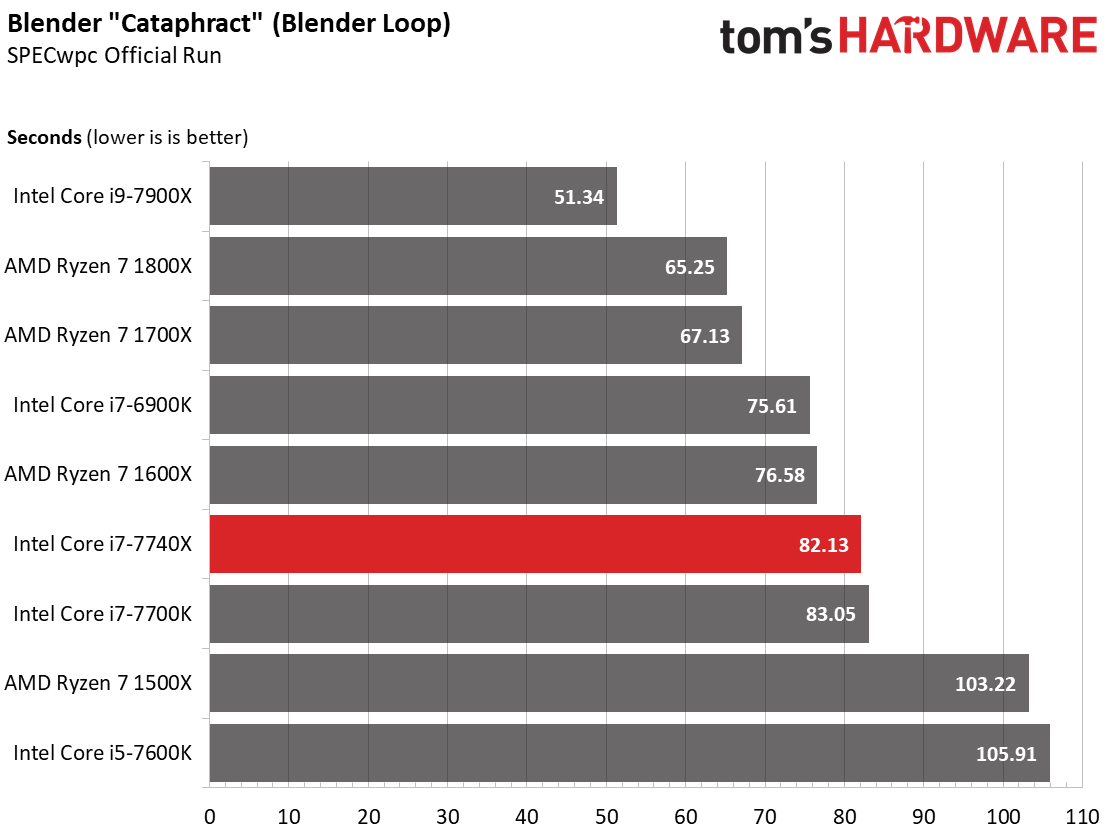




CPU Performance: Encoding & Compression/Decompression
The Kaby Lake-X-based processor fares reasonably well when asked to perform simple decompression. However, all of the other tasks in this category end in total defeat.




High-Performance Computing (HPC)
This final benchmark discipline spells doom for Intel’s Core i7-7740X. Its designation as a high-end desktop part suggests it should do well, but that's just not the case. With four Hyper-Threaded cores, the -7740X carves out a spot in the back of the field.

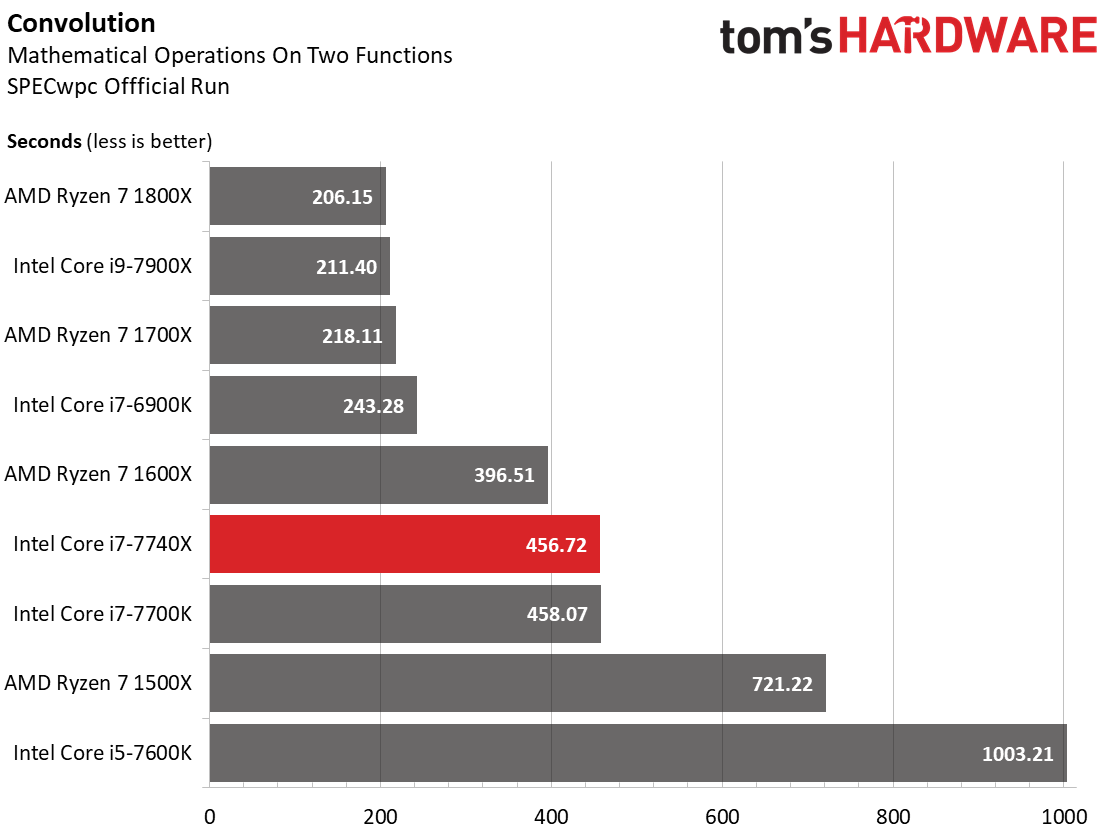




Intel’s Core i9 processors might be decent options for the workstation space, but the same cannot be said for Core i7-7740X. This is a consumer CPU that was given the wrong moniker. Despite its lower price point, the expensive X299 platform negates a lot of those savings.
Furthermore, the new Kaby Lake-X-based model doesn't really outperform the mainstream version. Core i7-7700K is positioned correctly, and its successors should have continued along those lines instead of pretending that they are something they're not. Case in point: the performance differences between -7740X and -7700K in the workstation and HPC space are even smaller than in our gaming benchmarks. So, an expensive platform doesn't get you very far.
MORE: Best CPUs
MORE: Intel & AMD Processor Hierarchy
MORE: All CPUs Content
Current page: Workstation & HPC Performance
Prev Page Project CARS & Rise of the Tomb Raider Next Page Power Consumption & Overclocking
Paul Alcorn is the Editor-in-Chief for Tom's Hardware US. He also writes news and reviews on CPUs, storage, and enterprise hardware.
-
AgentLozen I'm glad that the option for Kaby Lake is available on the x299 chipset. In practice it seems impractical. This article shows you have to pay a lot more for slightly higher overclocking potential.Reply
I'm curious what Intel's plans are for next year regarding their high end desktop chips. They've already used the Kaby Lake X name for this generation. Should we expect Kaby Lake X 8900X? -
Kaz_2_ Intel high power consumption is not great in thr long run. You want the best for your investmentReply -
TJ Hooker ReplyThe curve below shows clearly that waste heat isn't dissipated quickly enough. Just as we did in our AMD Ryzen and Intel Core i9 launch articles, we used a very thin copper plate to measure the heat spreader's temperatures as well.
Why aren't there any numbers/divisions on the horizontal axis? Also, you say you did the same thing for the Ryzen reviews but I didn't see a similar graph in those articles (might just be blind though).
-
the nerd 389 How does the thermal performance of this chip compare to the 7700k? Specifically, does the larger surface area of the heat spreader give you a meaningful increase in thermal conductivity between the die and the heatsink?Reply -
rantoc Dang intel seem to be doing yet another stupid move with X299 beside rushing it out the door making the AMD's pretty brand new architecture/platform appear mature in comparison. As for this move - What's the incentive to pay premium for the X299 when getting a chip like this that won't even utilize it fully? The 7700k and platform are equal in performance in most tests and far cheaper...Reply
With the poor thermal transfer between the core and heat-spreader the retail chips won't likely even overclock well either. Never cared about the cherry picked "reviews" chips at all when it comes to overclocking as they very rarely represent the retail chips. -
rantoc What's the incentive to buy an expensive motherboard and yet get near zero of it's true potential with this cpu? That's paying for a lot of real estate that can't be used at all and on top of that the same poor thermal transfer between the core and heat-spreader meaning a good stable oc is harder to obtain and far less likely to happen on the retail IE non-review cherry picked ones.Reply
I think intel shoot themselves in the foot by scaling this one down to much and then couple it with an overpriced platform for what you get out of it, x299 will be good no doubt but only with the right chips and only when the rushed out of door bugs been fixed. -
This is awesome setup because you can buy x299 motherboard for $219 dollars already which gives you amazing room for later upgrade and this CPU can run 5.0Ghz easily producing very little heat. People at Toms Hardware completely missed the point. I'd rather get $219 x299 motherboard than outdated Z270 for $160.Reply